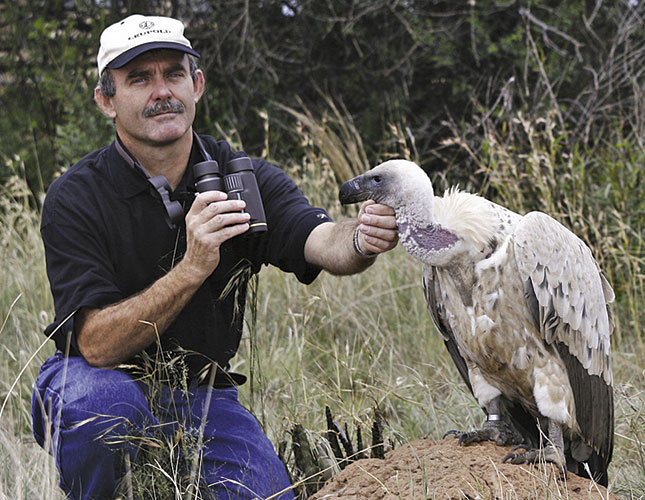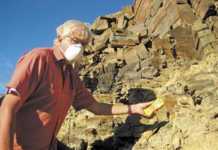
Photo: Courtesy of Dr Gerhard Verdoorn
Why are you so concerned about the taming of SA’s game?
New wildlife industry entrants, including farmers, don’t always take the negative ecological repercussions of their actions seriously enough. Some of these investors and buyers have not carefully considered the effect of a backlash on game prices if hunting or conservation organisations start to formally oppose or even boycott certain breeders.
READ:Know your cattle: Brahman
Local biltong hunters have already become critical of dubious practices in the industry, while the Council for International Conservation, Safari Club International, Rowland Ward Publications, and a Swedish hunters’ organisation have expressed reservations about current trends in selective and intensive game breeding. Some of the undesired consequences of intensive breeding are:
- Fragmentation of habitats and wildlife systems;
- A decrease in the genetic integrity of indigenous wildlife populations;
- A reduced natural ability to adapt to environmental changes;
- Disinvestment in extensive wildlife areas;
- Unnecessary attention from animal welfare activists.
We have to protect the country’s international reputation as a conservation leader, at all costs. We need to ask: do we really want to domesticate our wildlife heritage?
Unfortunately, many role players who don’t even know that South Africa is a signatory of the UN Convention on Biodiversity are equally ignorant of provincial conservation legislation. They need to recognise the so-called triple bottom line: social, economic, and environmental responsibility.
Everyone in the wildlife industry, from existing game breeders to newcomers, should take cognisance of the broader impact of their operations. However, due to the huge amounts of money involved, everything possible is done to protect these large investments and little attention is paid to the ecological aspects.
How real is the threat of a price bubble?
The wildlife industry as a whole is still doing well and is unlikely to collapse, but if a classic ‘price bubble’ is forming in some sectors (as is suggested by several observers), many investors will lose fortunes when demand for certain animals dries up.
This will place the rest of the industry at risk. The concern is that there’s no sustainable end-user market for many of the products currently produced by a small section of the industry.
These include tame wild animals and the inbreeding of recessive genetic characteristics such as coat colour.
Selecting for horn length, sometimes with the help of feed additives, is another activity that’s bad for conservation and biodiversity.
Such uncontrolled practices have the potential to eventually damage the entire South African wildlife sector because long-term success is based on the perceptions and preferences of hunters and ecotourists. Without these clients there is no business.
Does the ordinary biltong hunter really have any say in this debate?
There are 300 000 consumptive hunters in South Africa who contribute more than 74% of the hunting and wildlife sector’s total annual income. According to a study by North-West University, consumptive hunting made up R6,3 billion of the sector’s R8,5 billion contribution to the economy in 2013.
For many hunters, wild antelope are becoming too expensive to hunt, while those bred, fed, and raised in artificial conditions can’t be hunted because it would be tantamount to canned hunting – a reputational risk the industry can ill afford.
Even dedicated trophy hunters want to hunt wild animals in their natural state and habitat. While it’s difficult to simulate wilderness areas in which ecological processes function as they should, responsible ranchers do try to provide animals with the necessary space while introducing new blood to prevent inbreeding.
Unfortunately, there are postage stamp-sized ranches where game is bought in only to be shot soon afterwards. Cooping antelope up in small camps of a few hectares is comparable to running a milking parlour with tame buck.
In this scenario, as herds become increasingly ‘contaminated’, it’s likely that purebred common game such as springbok, will become scarcer and more valuable than ‘domesticated’ colour variants. And, as the ordinary hunter prefers ordinary animals with normal proportions and coats, the average game rancher will eventually have to pay up to provide the preferred product.
What is the next step in domestication?
Many of the developments in the wildlife industry are driven by shrewd businessmen who have done much for conservation, but one can only guess what the next step would be.
Although leaders in the industry are against artifical insemination, it can play a role in saving species from extinction. This should, however, happen in accordance with the meta-population management principles of the International Union for Conservation of Nature.
Phone Gerhard Verdoorn on 082 446 8946 or email him at [email protected].
This article was originally published in the 3 + 10 April 2015 issue of Farmer’s Weekly.












